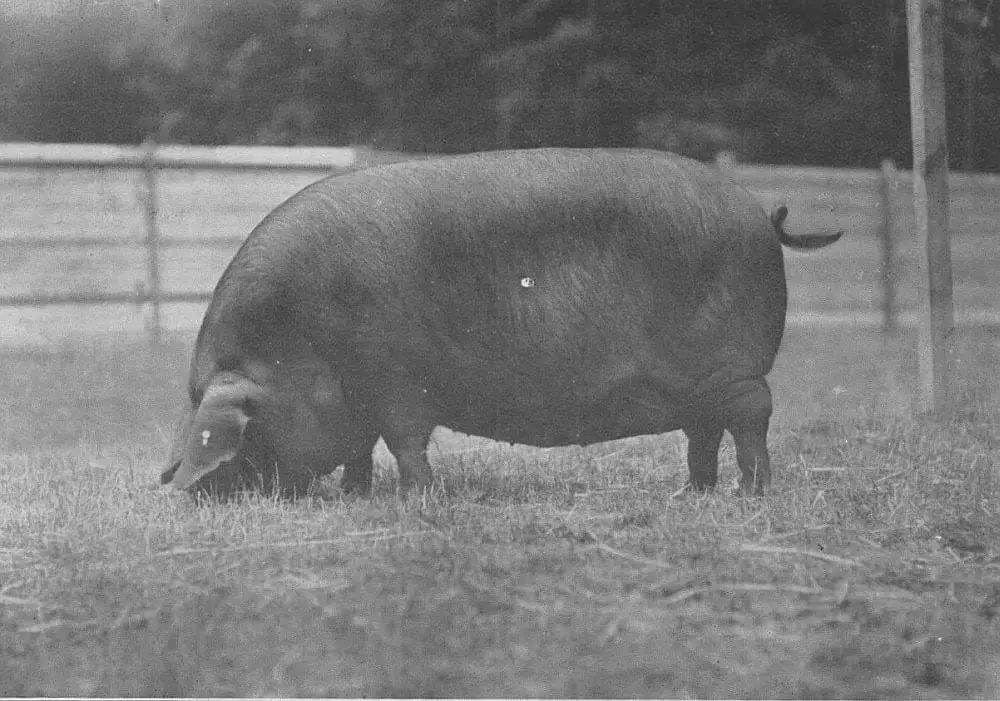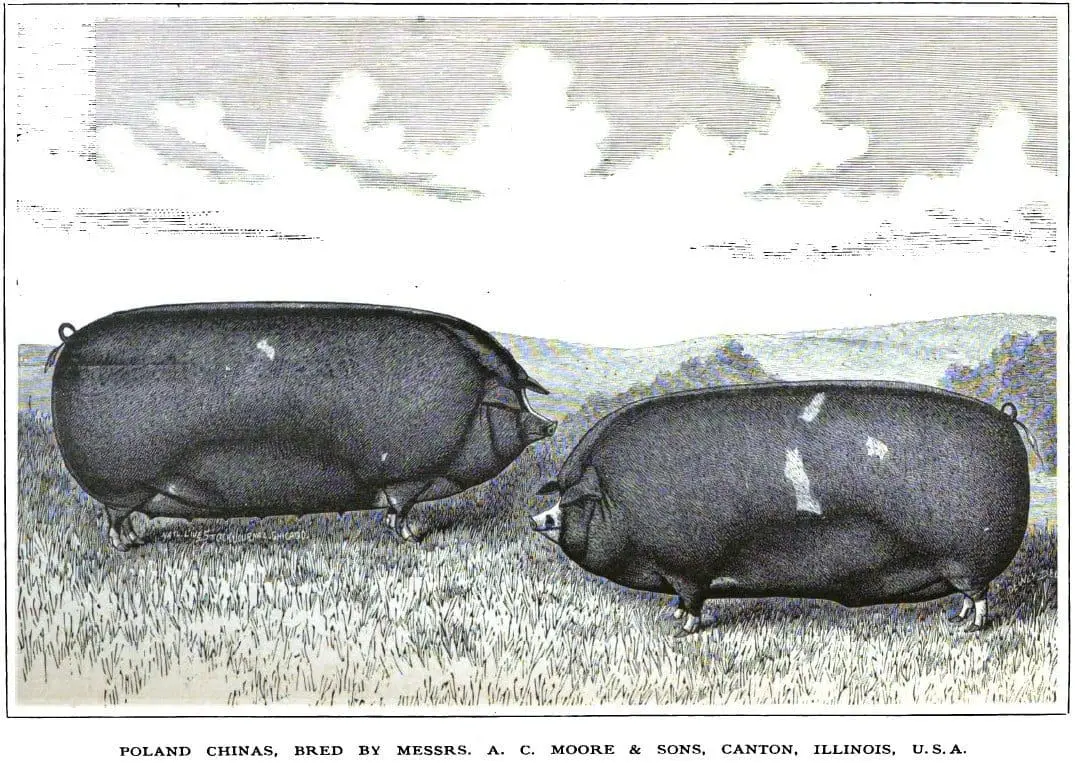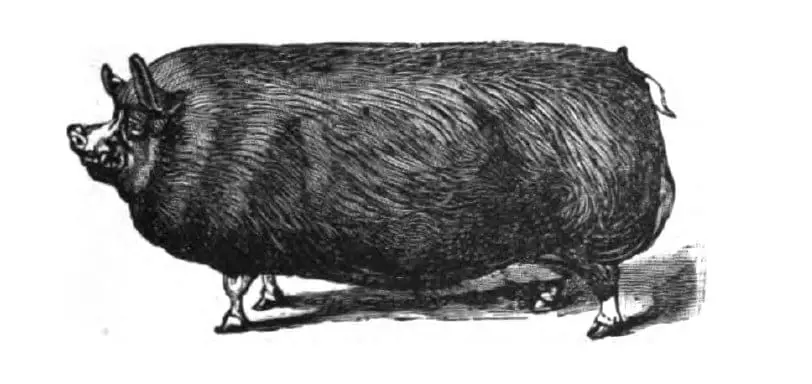The ideal body shape for pigs has changed dramatically across history and geography, depending on both the types of pork products desired and the available feed resources. The incredible morphological plasticity with which pigs have responded to these pressures is amazing. Fat or lean, long or blocky, coarse haired or smooth, one can find a pig for all seasons.

In resource rich areas (i.e., areas where pigs were fed, not allowed to run free and scavenge) pigs traditionally were grown out to prodigious sizes. Pig fat was in demand until petrochemicals replaced lard and tallow in manufacturing in the early 1900s. The end of the era of fat pigs came abruptly in the 1940s when the vegetable oil industry displaced lard as a cooking fat. Will fat pigs make a comeback? That’s a different topic for a different blog post.

When I look at the drawings of fat pigs from the heyday of lard, it is interesting to see how farmers and breeders saw their pigs. Even though the books of the time show by their anatomical drawings that they were capable of producing accurate scale drawings, their “glamor shot” drawings are all altered to show the ideal pig. Breeders hired illustrators to capture likenesses of prized pigs for advertising purposes. Their ideal pig was entirely about the lard. It had legs a little too short, ankles a little too flimsy, and snouts a little too fine. So while folks complain about the use of Photoshop to “body shape” models who don’t meet our ideals, just know that pig farmers were way ahead of that trend.


